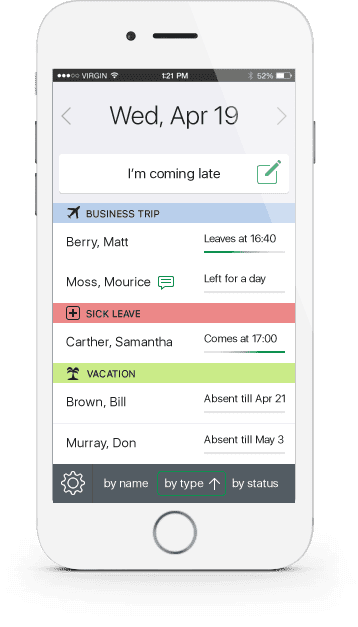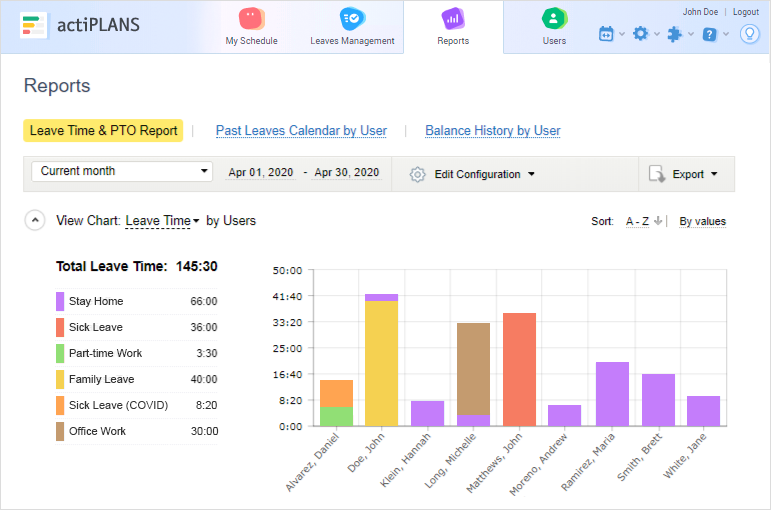Every responsible employer must know how to reduce absenteeism because its negative effects on businesses may be extremely harsh. Based on 2015 data by the CDC Foundation, the total cost of absenteeism due to illness and injury reached $225.8 billion a year, which equated to $1.685 per employee. It means if you hire a team of 50 members, your annual loss due to employee sickness alone may be as high as $84.250 at least.
However, health problems are not the only reason why workers call in sick and choose not to come to work when expected.
A Career Builder survey revealed that 40% of employees who called in sick in 2016 didn’t actually have any illness or injury. An unplanned absence may take place when a person:
- Simply doesn’t feel like working,
- Needs to relax and have a little bit more sleep,
- Wants to spend some time with their family and friends,
- Or decides to catch up on household responsibilities.
So, besides poor health, the real and obvious causes of absenteeism are excessive workplace stress and employee disengagement. By calling in sick, some of your team members may try to avoid unpleasant situations, such as interpersonal conflicts, bullying and harassment. And others can get away from work because they don’t feel appreciated and valued enough.

As an outcome, businesses suffer from much more than just direct financial costs of frequent absenteeism. A high rate of unplanned absences has an adverse effect on individual productivity and team collaboration, performance quality and overall business profitability. It often results in understaffing and is linked to a high risk of burnout and low morale among those employees who have to work overtime while their colleagues are missing.
So, how to reduce absenteeism and its negative consequences? You need to:
- Systematically track unplanned absences in your company,
- Analyze time off data in depth,
- Identify the actual causes of absenteeism,
- And try your best to address them.
In addition, below we described the five best practices that aim to reduce absenteeism head on. Read on to find out how they can help!

Best Tips on How to Reduce Absenteeism
1. Develop a people-centered PTO policy
Since stress and sickness are among the major causes of absenteeism, you’ll make a lot of progress in eliminating the problem by granting your employees enough days away to enjoy. An unlimited vacation policy is one of the most promising leave arrangements in this regard. Companies that use it allow their team members to take as many days off per year as they wish, provided that all the assigned tasks are successfully completed, and performance objectives are met.
But if you think that this policy is too innovative for your company, just consider undertaking a more traditional approach to PTO management that not only matches your current business circumstances and needs but also takes your employees’ interests into account. Remember that an inability to take a break from work is detrimental to one’s mental and physical health. So, it’s better to give workers a chance to get enough time off in an authorized manner than to push them into cheating you.
2. Encourage longer-term vacation
The Harvard Business Review reported that, in 2015, about 55% of Americans left at least some of their accrued days off unused (which equals nearly 658 million vacation days per annum in total). Five years after, the situation didn’t change much. And according to the Washington Post, the almost “nonexistent” mandatory PTO policies are to blame for that.
Yet another significant factor preventing people from enjoying their well-deserved time off and making them neglect their personal needs is the culture that praises the state of busyness and places professional achievements above everything else.
If, as a leader, you consider time off taking a selfish behavior and tend to promote and recognize only those individuals who work overtime, your team members won’t feel safe to schedule longer-term vacations. It’s important to understand that by encouraging employees to lead well-balanced lives and take care of themselves, you not only will make them happier but also gain significant business advantages – absenteeism prevention is among the main of them.
3. Make it simple
Time off management shouldn’t become a daunting task either for employees or managers. By making the procedure time-efficient and straightforward, you’ll reduce administrative costs and stop exhausting your colleagues with burdensome procedures.
The best way to keep everyone happy with absence management is the adoption of a software system that supports employee self-service and enables managers to respond to leave requests promptly. And when deciding on absence planning and vacation tracking procedures, your goal is to choose a tool that suits your team’s needs and interests just perfectly.
In this regard, actiPLANS is worth your close consideration. As simple as can be, this piece of software has everything one needs to streamline leave management in a company of any size. It gives your team members a chance to stay in the know of their current PTO balances and schedule time off independently by using a convenient calendar interface (aka My Schedule). Employees may also apply the mobile app to quickly notify colleagues about any changes in their personal work schedules (i.e., lateness, short-term sickness, etc.) or review who’s absent from the workplace and for how long.
And as for managers, actiPLANS enables them to automate and speed up leave request processing. It provides a robust leave tracking and reporting functionality that helps to identify any absenteeism problems early on.
To see for yourself how effortless absence management can become with actiPLANS, sign up for a 30-day online trial and test all the tool’s valuable features absolutely for free.

4. Communicate the rules to your team
When the preferred course of action is set up and leave management rules are formulated, you need to make sure that everyone on your team is familiar with them. So, take some time to talk to your colleagues about absence management. Discuss all the dos and don’ts with them and provide full access to organizational policies and other relevant sources of information on the matter.
Plus, if you eventually decide to implement a self-service software tool, don’t forget to instruct employees on how to use it correctly. By offering training and sufficient support during the learning process, you’ll minimize the risk of costly mistakes and team dissatisfaction with the established procedures.
5. Monitor and analyze leave management data
The last step that will help you address absenteeism successfully is to track how your staff members dispose of their accrued time off and how well they comply with the adopted leave rules.
Collect historical data, run reports with a software tool of your choice and ask yourself the following questions:
- Do your team members tend to take longer vacations or occasional days off here and there?
- What leave types do they take most frequently?
- How many sick leaves do they use per year and how often do those sickness periods last?
- How often do your employees come late to work?
- Do they always make the lost time up successfully?
By asking these and similar questions during data analysis, you’ll identify if you’re facing a serious absenteeism problem in your company. Consequently, you’ll be able to determine the causes of unplanned and unauthorized absences through further research and conversations with your team. In combination, these methods will let you develop effective targeted solutions for reducing absenteeism.

How to Reduce Absenteeism: Final Thoughts
Absenteeism is a complex issue. To cope with it well, you have no other choice but to address its underlying causes.
It’s essential to invest a lot of effort in absence management in order to establish a smooth-running leave tracking process. And to maximize positive results, you need to do the following as well:
- Focus on culture development,
- Offer fair employee benefit plans,
- Promote employee morale and workplace safety,
- Implement adequate staffing methods to reduce excess stress,
- Aim to make your team members feel comfortable and valued at work every single day.
And to analyze how the absenteeism rate changes in your team over time, you can always use actiPLANS. With this smart leave management system, each employee absence, both planned and unplanned, won’t stay unnoticed.



